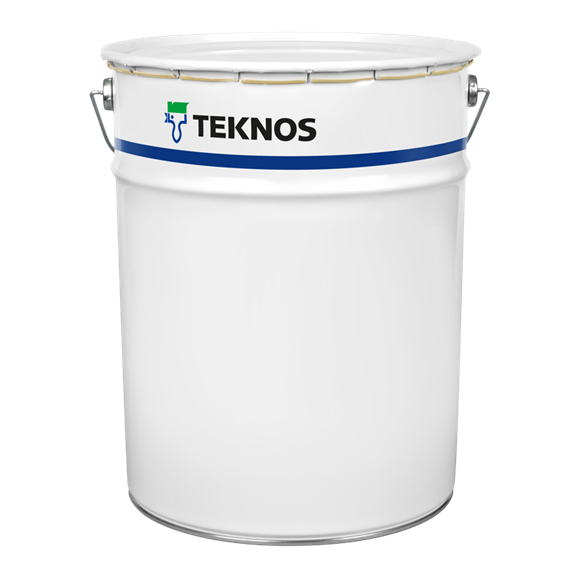TEKNOPLAST 90
Epoxy top coat
- Chemical resistant
- Wear resistant
- 2-component
- Solvent-borne
- Topcoat

- Chemical resistant
- Wear resistant
- 2-component
- Solvent-borne
- Topcoat
TEKNOPLAST 90 is a gloss, two-pack epoxy top coat.
Use: As a top coat in abrasion and chemical resistant Epoxy Coating Systems and also in maintenance coating systems. The paint has good adhesion to bare zinc, aluminium, thin-plate and acid-proof steel. TEKNOPLAST 90 is quickly overcoatable and is therefore suited to a fast painting tempo. It is also well suited for application done by twin-feed spray. The paint film withstands heavy abrasion, aqueous solutions of chemicals, oils, grease and solvents. TEKNOPLAST 90 withstands dry heat up to +120°C. Frequent attacks by heat may cause the colour to change. The paint comes up to the specifications set in the Swedish standard SSG 1026-TA. TEKNOPLAST WINTER HARDENER 7212 (data sheet no. 1317) is to be used when painting at temperatures below +10°C. When using the WINTER hardener it will strengthen the yellowing and chalking that is typical for epoxy paints.
Technical data sheet
Surface preparation
Application
Application conditions
Storage
| Total mass of solids | abt. 760 g/l |
|---|---|
| Volatile organic compound (VOC) | abt. 434 g/l |
| Volatile organic compound (VOC) | (For mixed product, base and hardener ratio 4:1) Approx. 430 g/l (Theoretical, according to IED 2010/75/EU) 367 g/l (Tested according to China GB/T 23985-2009) |
| Pot life | 4 h (+23 °C) |
| Mixing ratio | 4:1 by volume (comp. A : comp. B) |
| Hardener | Comp. B: TEKNOPLAST HARDENER |
| Gloss | Gloss |
| Tinting system | Teknomix;Teknotint |
| Practical spreading rate | The values depend on the application technique, surface conditions, overspray, etc. |
| Drying time – dust free | 1 h (ISO 9117-3:2010) |
| Drying time – touch dry | 4 h (ISO 9117-5:2012) |
| Drying time – fully cured | 7 d |
| Thinner | Standard thinner: TEKNOSOLV 9506. |
| Clean up | TEKNOSOLV 9506 or TEKNOSOLV 9530. |
| Colours | Same tinting system should be used during the whole painting project. |
| Safety markings | See safety data sheet. |
| Approvals & certificates | SSG 1026-TA |